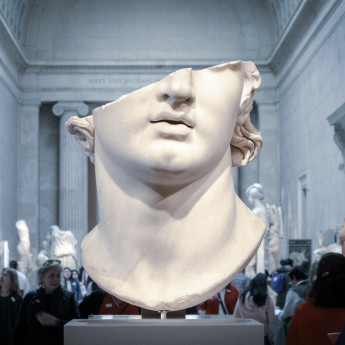
Details
Artist
Styles
3d construction // SBST 2823 by Ludwig Wilding, created in 1993, is a captivating example of op art and visual experimentation. This three-dimensional construction, part of a limited edition of 100, features a meticulously arranged pattern of black and white lines that create a pulsating, optical illusion. The circular motif appears to ripple outward, giving the viewer a sensation of movement and depth, as if the surface were alive with undulating energy. Wilding's work often challenges perception, using precise geometry to evoke a dynamic visual experience. This piece engages viewers in a mesmerizing play of light, shadow, and spatial ambiguity, characteristic of Wilding’s explorations in optical art.
SBST 2823, 1993
form
Medium
Size
28 x 28 X 6 cm
- Inches
- Centimeters
Edition
Price
- USD
- EUR
- GBP
Details
Artist
Styles
3d construction // SBST 2823 by Ludwig Wilding, created in 1993, is a captivating example of op art and visual experimentation. This three-dimensional construction, part of a limited edition of 100, features a meticulously arranged pattern of black and white lines that create a pulsating, optical illusion. The circular motif appears to ripple outward, giving the viewer a sensation of movement and depth, as if the surface were alive with undulating energy. Wilding's work often challenges perception, using precise geometry to evoke a dynamic visual experience. This piece engages viewers in a mesmerizing play of light, shadow, and spatial ambiguity, characteristic of Wilding’s explorations in optical art.
- Recently Added
- Price (low-high )
- Price (high-low )
- Year (low-high )
- Year (high-low )
What is contemporary art?
Contemporary art refers to avant-garde or innovative art created in the recent past or present day. The exact starting point of contemporary art varies depending on the institution, often tied to the founding year of museums or galleries that showcase the style. Contemporary art is characterized by its focus on current ideas, diverse media, and the exploration of new concepts and techniques.

















